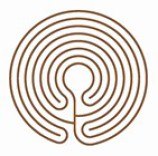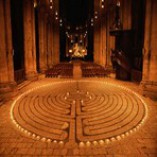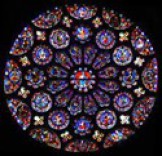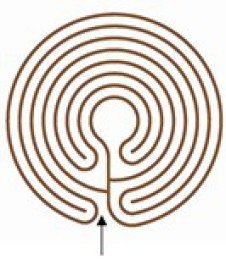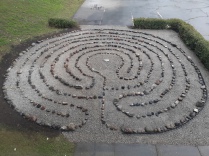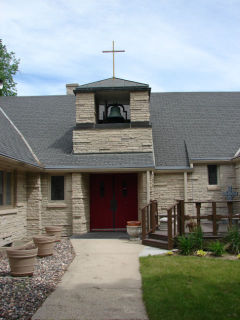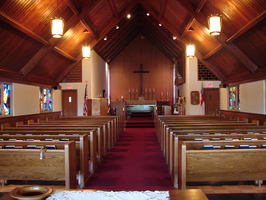The Labyrinth
How to Walk the Meditation Labyrinth
A Little Background
Labyrinths have been around for over 4000 years and are found in just about every major religious tradition in the world. They have been an integral part of many cultures such as Native American, Greek, Celtic and Mayan. The Hopi called the labyrinth the symbol for “mother earth”. Like Stonehenge and the Pyramids, they are magical geometric forms that define sacred space.
During the Middle Ages, they were used to symbolically represent a pilgrimage to the Holy Land. Today, labyrinths are being used for reflection, meditation, prayer and comfort.
Chartres Cathedral at Chartres, France is a very famous example of an eleven circuit design. One of the most famous aspects of the cathedral in Chartres is the spectacular rose window over the great west doors. It has the same dimensions as the labyrinth and is exactly the same distance up the west wall as the labyrinth is laterally from the cathedral’s main entrance below the window.
An imaginary cosmic hinge located where the doors and floor intersect would, if closed, place the rose window directly on top of the labyrinth, thus the sparkling, colored light of the window and the darkness of the labyrinthine pilgrimage are combined.
Another more recent example can be found at Grace Cathedral in San Francisco and Christ the King Lutheran Church in Torrence, California
Many people make the mistake of thinking a labyrinth and a maze are the same. A maze has dead ends and many trick turns. A labyrinth has only one path leading to the center and back out again. There are no dead ends.
When you walk a labyrinth, you meander back and forth, turning 180 degrees each time you enter a different circuit. As you shift your direction you also shift your awareness from right brain to left brain. This is one of the reasons the labyrinth can induce receptive states of consciousness. It can also help to balance the charkas.
Each person’s walk is a personal experience. How one walks and what one receives differs with each walk. Some people use the walk for clearing the mind and centering. Others enter with a question or concern. The time in the center can be used for receiving, reflecting, meditation, or praying, as well as discovering our own sacred inner space. What each person receives can be integrated on the walk out. Your walk can be a healing and sometimes very profound experience or it can be just a pleasant walk. Each time is different.
Labyrinths are truly sacred places. The design itself is inherently powerful. The space and the experience of walking it are also very sacred and powerful and help us feel a greater sense of Oneness. It is a tool for people of all beliefs to come together for a common spiritual experience.
Begin where the arrow indicates (see picture above). Walk slowly and mindfully. With each step go deeper into your meditation. You may wish to repeat a positive affirmation for health, strength, wisdom, etc. You may wish to recite a poem or text. You may wish to read something as you walk (watch your step!). Going towards the center symbolizes going deeper into your meditation/thoughts/requests/relationship.
Follow the path through the stones until you arrive at the center. You may decide to have the center symbolize anything you need: God, healing, receiving what you ask for, etc.
Take a moment at the center to give thanks and to receive what you were seeking. Then begin to retrace your steps out the same way you came in. This symbolizes going back into the world, into your regular daily life – but this time with your healing/request/renewal.
God bless your journey!


